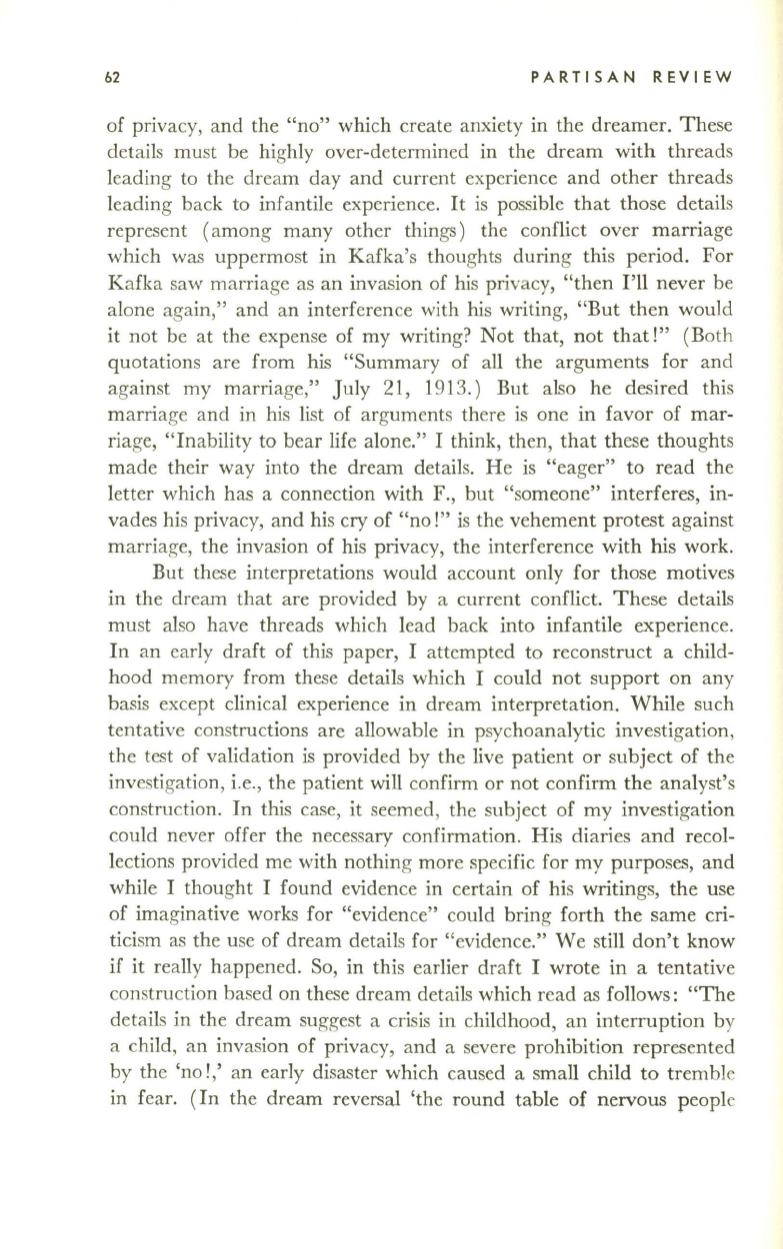
62
PARTISAN REVIEW
of privacy, and the "no" which create anxiety in the dreamer. These
details must be highly over-determined in the dream with threads
leading to the dream day and current experience and other threads
leading back to infantile experience. It is possible that those details
represent (among many other things) the conflict over marriage
which was uppermost in Kafka's thoughts during this period. For
Kafka saw marriage as an invasion of his privacy, "then I'll never be
alone again," and an interference with his writing, "But then would
it not be at the expense of my writing? Not that, not that!" (Both
quotations are from his "Summary of all the arguments for and
against my marriage," July 21, 1913.) But also he desired this
marriage and in his list of arguments there is one in favor of mar–
riage, "Inability to bear life alone." I think, then, that these thoughts
made their way into the dream details. He is "eager" to read the
letter which has a connection with F., but "someone" interferes, in–
vades his privacy, and his cry of "no!" is the vehement protest against
marriage, the invasion of his privacy, the interference with his work.
But these interpretations would account only for those motives
in the dream that are provided by a current conflict. These details
must also have threads which lead back into infantile experience.
In an early draft of this paper, I attempted to reconstruct a child–
hood memory from these details which I could not support on any
basis except clinical experience in dream interpretation. While such
tentative constructions are allowable in psychoanalytic investigation,
the test of validation is provided by the live patient or subject of the
investigation, i.e., the patient will confirm or not confirm the analyst's
construction. In this case, it seemed, the subject of my investigation
could never offer the necessary confirmation. His diaries and recol–
lections provided me with nothing more specific for my purposes, and
while I thought I found evidence in certain of his writings, the use
of imaginative works for "evidence" could bring forth the same cri–
ticism as the use of dream details for "evidence." We still don't know
if it really happened. So, in this earlier draft I wrote in a tentative
construction based on these dream details which read as follows: "The
details in the dream suggest a crisis in childhood, an interruption by
a child, an invasion of privacy, and a severe prohibition represented
by the 'no!,' an early disaster which caused a small child to tremble
in fear. (In the dream reversal 'the round table of nervous people


